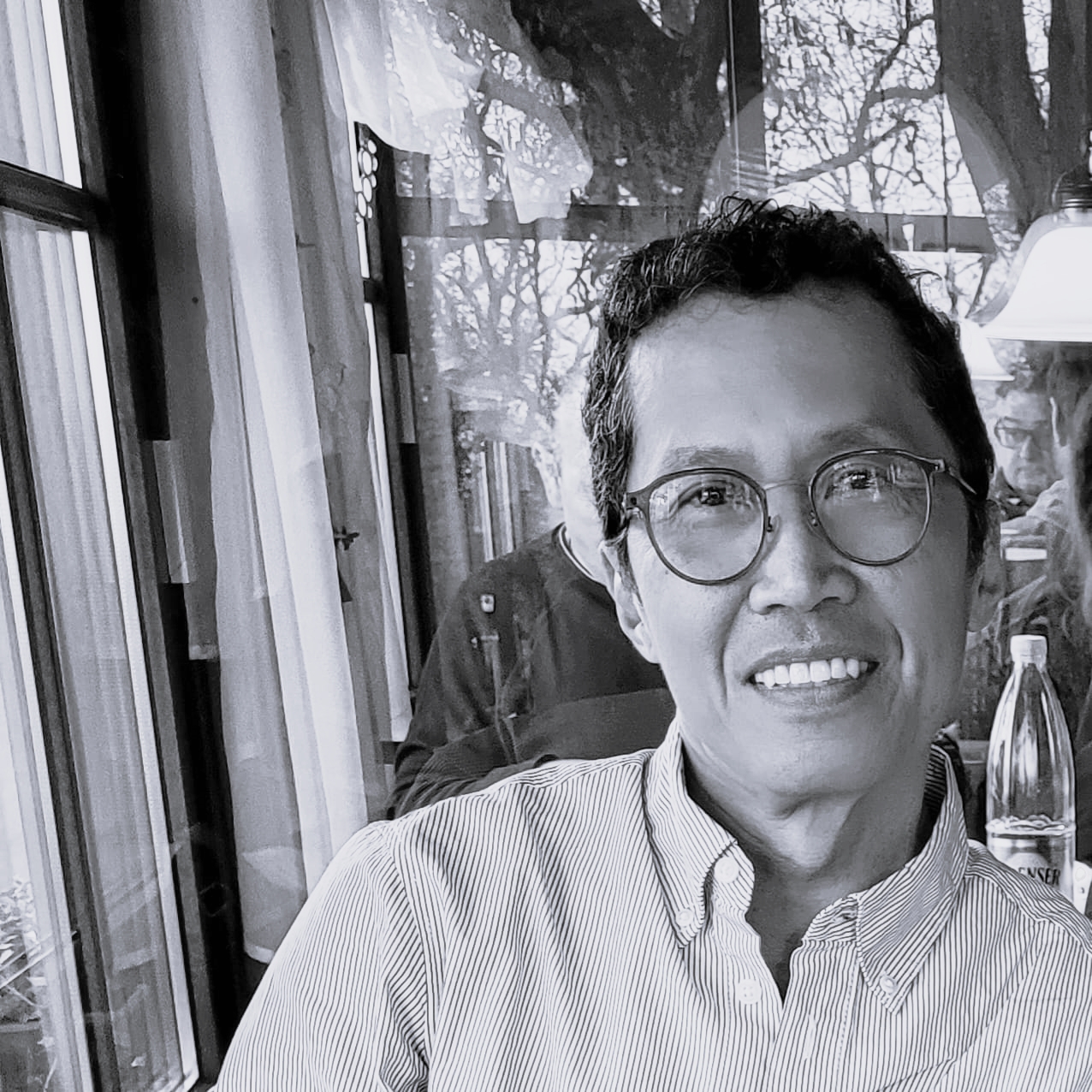
Hanura Hosea (born in Wates, 1966) completed his Geography study at Gadjah Mada University, Yogyakarta. After completing his studies, he continued his education in Film and Animation Engineering and began living in Germany.
Since 1992, Hanura has been actively working as a freelance writer for articles and mass media, documenting events through photos and videos, as well as creating posters and pamphlets for art exhibitions. Some of Hanura's history of involvement includes being a freelance writer for: Biennale Yogyakarta VII Takes On A New Look (2003), Pameran Kekayaan Keragaman (2003), and the article of Gemuruh Pasar yang Tidak Mencerdaskan (2003). He also made posters and pamphlets for events: Countrybution, Biennale VII Yogyakarta (2003), Soap Document (2002), and Art On T-Shirt Exhibition (2001).
Hanura Hosea predicted that human stupidity would not disappear in the future. Between the solid pillars of knowledge and common sense, stupidity creeps in. The utopia of a society without ignorance is more implausible than the ideal of human freedom or eternal life. "Smart" people in politics make random decisions that make them look like stupid creatures. Intellectuals who are too sure of their own opinions, or artists who indulge in fantasies are included in it. Stupidity is not the opposite of intelligence.
In these works, motifs of stupidity are displayed through fat doll figures that appear to harbor certain beliefs in acting. A figure blocking his view with a stack of buckets, an odd behavior with a reverse saw, a virtual body of worker that evolves into a four-eyed spindle, a utopian devotee. Paintings are done on tablets and printed. The themes of stupidity are also based on the artist's memories of his own stupidity.
The book die Tote Masse (Dead Objects; 2022-2024), consists of 117 images sourced from daily observations of objects without souls. The animated videos projected onto the big screen-looking like dirty and wrong images-suggest a kind of compromise with stupidity. For Hanura the term of image also carries an imaginary meaning. How Hanura tells stories is like "soap", touching, foaming and disappearing in an instant.